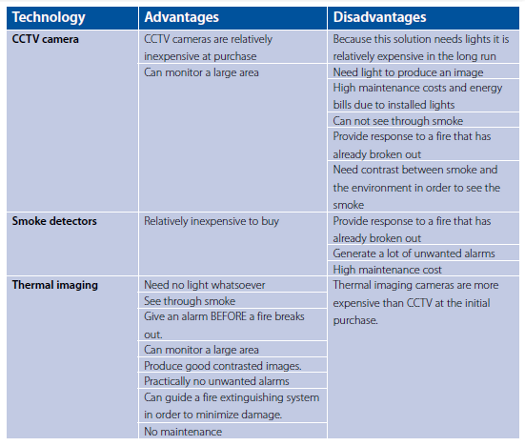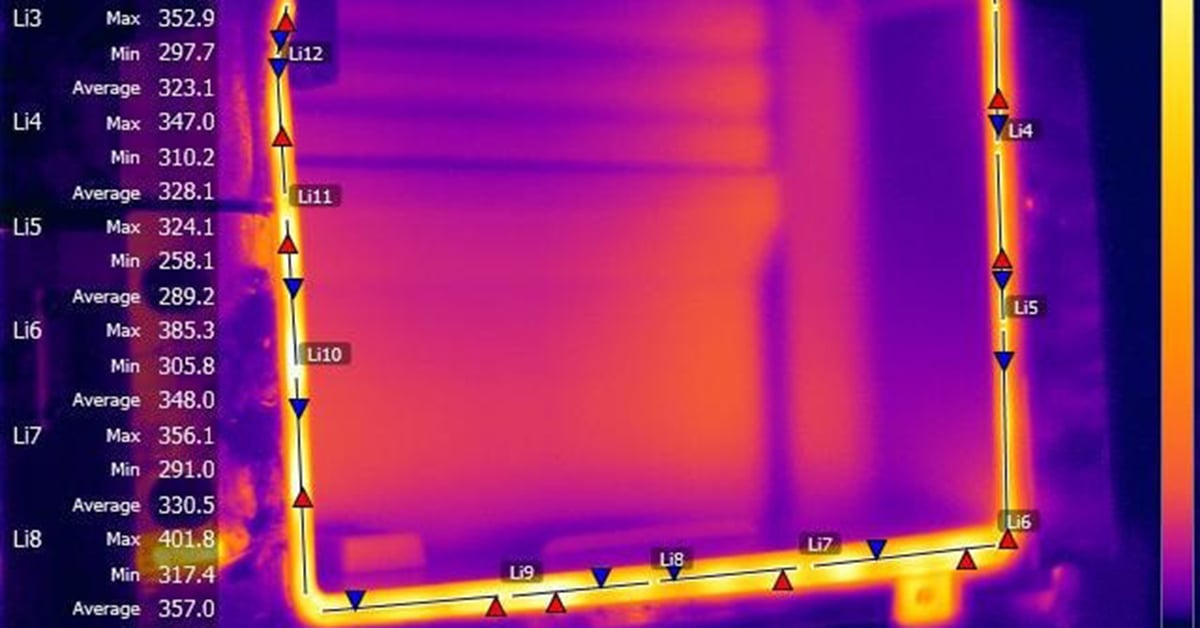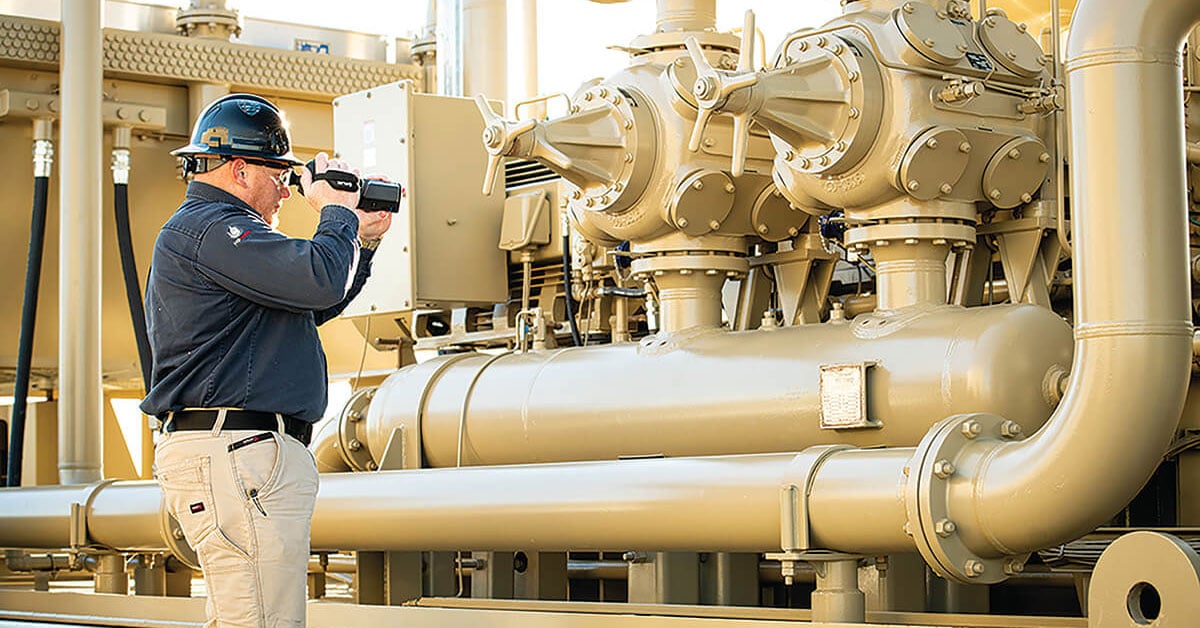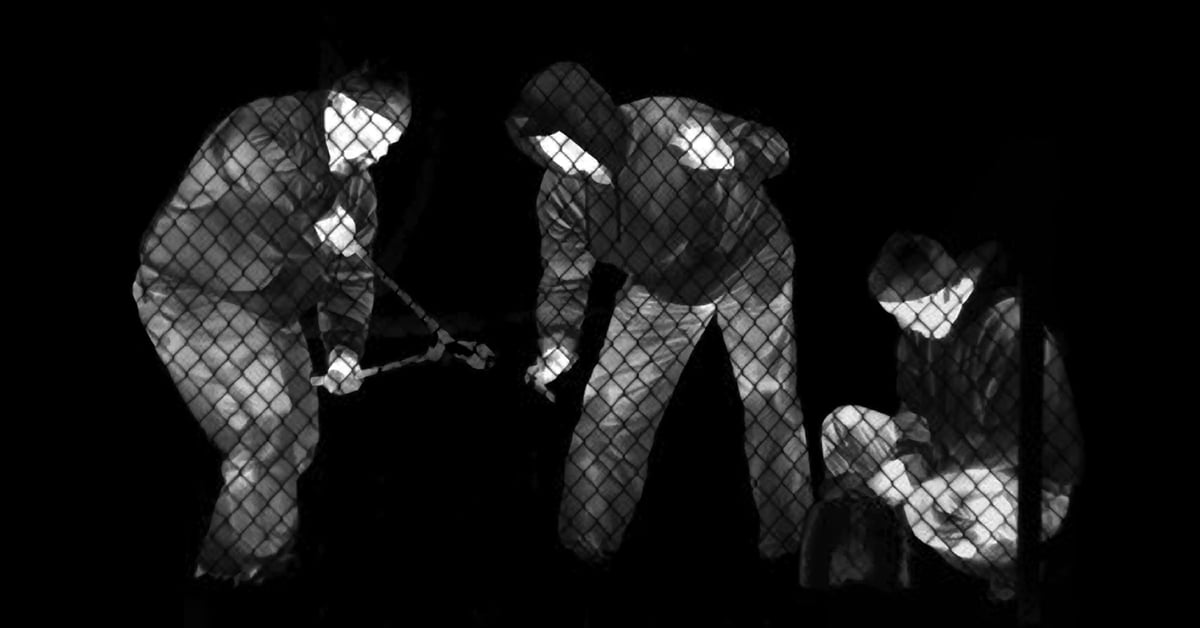Thermal Imaging Cameras for Warehouse Asset Protection
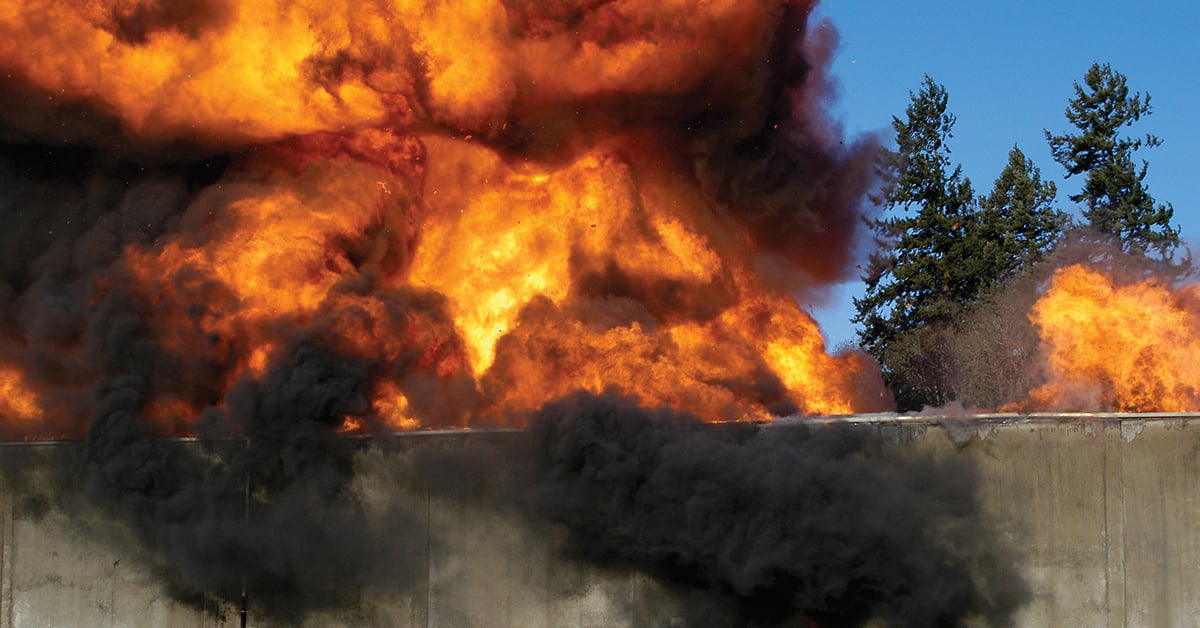
Worldwide, warehouses are stocked with highly valuable goods. Protecting these goods against theft is of the utmost importance. But theft is not the only danger. An even greater danger is fire. Fire can destruct an entire warehouse within an extremely short timeframe. The value of the destroyed goods during a fire can be tremendous and the cost of a life that is lost during a fire is impossible to calculate. Statistics show high increase in assets loss due to fire although warehouses are equipped with fire alarms and fire fighting systems.
Critical Content Monitoring
Many types of material are exothermic without exposure to an external stimulus. Their internal temperature can increase to the point where they begin to burn spontaneously. The resulting fire and intense heat can cause the material in other containers to ignite; ultimately the warehouse structure, electrical wiring, and equipment can be destroyed.
Although warehouses that are storing exothermic equipment are more susceptible to fire than others, a fire can break out in any warehouse. No matter which goods are stored in it.
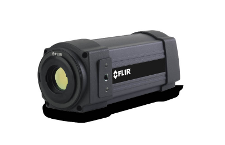
The FLIR A310 is an affordable and accurate non-contact temperature imaging and measurement tool that can help to avoid fires in warehouses.
CCTV cameras
Warehouses and other facilities need to be protected against fire. There are different options to do this. CCTV cameras can be installed to monitor for smoke or flames. The disadvantage is that when smoke or flames starts to produce, the fire has already set in.
CCTV cameras are also only able to produce a good quality image when there is enough light. In a warehouse where windows are scarce, this is not often the case. Certainly not during the night. This means that lighting needs to be installed. Not only is the installation expensive, also powering up the lights and periodical light bulb replacement is extremely expensive.
Another disadvantage of CCTV cameras is that you can only see smoke or flames when the images are properly contrasted. A small amount of grey smoke against a grey background will not immediately be noticed.
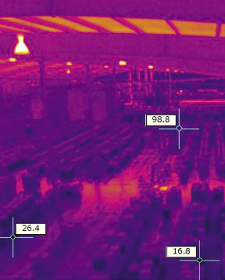
The temperature measurements by the FLIR A310 thermal imaging camera are combined with previously determined parameters. If the measured temperature rises beyond the parameter an alarm will go off.
Smoke detectors and sprinkler systems
Smoke detectors and sprinkler systems are another option to minimize the risk to warehouse contents. But not all fires are the same and not all smoke detectors respond well to all types of fires.
There are two main types of smoke detectors - ionization and photoelectric - contain technologies that work well under some circumstances and not so well in others. Ionization detectors respond more promptly to fires involving high flames, and photoelectric detectors alert more quickly to slower-burning, smoldering fires. Depending on the type of fire that is breaking out smoke detectors might therefore not respond as well as expected.
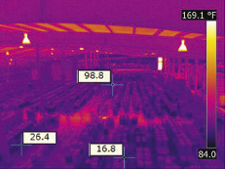
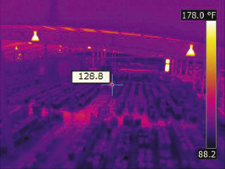
Smoke detectors can also generate quite some unwanted alarms. They can be triggered by steam and by dust. Installing smoke detectors near stoves, ovens or other heat and smoke generating devices is a quick recipe for unwanted alarms. Unfortunately, these areas are among those most in need of careful monitoring for fire hazards. Heat detectors, which sound alarms based on sharp temperature change, are worthy substitutes in such areas.
But the main disadvantage of smoke detectors is that they represent a response to fire that has already broken out.
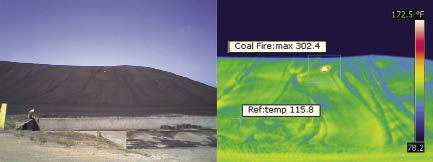
The use of the FLIR A310 thermal imaging camera is not restricted to warehouses, it can also be used for outdoor applications, such as this coal pile. The thermal image clearly identifies a fire that is about to erupt in the coal pile.
Thermal imaging cameras
FLIR thermal imaging cameras go a step further by providing an early warning response to hot spots that are detected. This is important for all types of warehouses but in particular for those that contain contents that that are prone to spontaneous combustion, or highly flammable.
FLIR thermal imaging cameras clearly reveal hot spots on a remote video or PC monitor in real time, and tell a viewer the precise temperature and location of those spots. In addition, this “Smart Camera” can be programmed to set the temperature at which an alarm signal is generated, and multiple target spots and alarms can be used. The alarm output can be wired directly to an alarm device, annunciator, programmable logic controller (PLC), or PC-based monitoring and control system. When an alarm occurs, personnel can then go to the visual monitor to verify the problem and its exact location.
FLIR thermal imaging cameras can be used to save hundreds of thousands of euros in content and structural damage by identifying imminent fires in an extremely early stage.
Why thermal imaging is so effective
All objects emit thermal radiation in the infrared spectrum that is not seen by the human eye. Thermal imaging cameras convert that radiation to a thermal image that is calibrated to a temperature scale. This non-contact temperature data can be displayed on a monitor, and can also be sent to a digital storage device for analysis.
When installed in a warehouse asset protection system FLIR thermal imaging cameras produce a clear thermal image on which the smallest of details can be seen. But more than that. The image also displays temperature data that have been obtained in a non-contact mode.
“Lights-out” warehouse monitoring
Unlike visible image cameras that might be used to detect smoke, thermal imaging cameras do not require lighting to produce their images. Therefore, they support “lights-out” 24/7 warehouse monitoring. Furthermore, thermal imaging cameras have another advantage: they can also see through smoke. This means that in case a fire should break out, they can be used to guide firefighters to the source of the fire and to see if there are still people in the smoke filled room.
However, thermal imaging cameras can “see” hot spots well before smoke or flames appear. This makes them ideal tools for asset protection in warehouses.
Multiple alarm features
Thermal imaging camera can provide a signal directly to an audible or visual alarm device but they can also be combined with a PLC or PC controller to create a monitoring system with advanced features. With FLIR’s thermal imaging camera firmware, or PC-based software, these features can include:
- High, low, and average temperatures in an image
- Temperature set-point alarms
- Multiple target spots and alarms
- Delays to ignore temporary temperature increases due to forklift trucks in the area
- Temperature trend analysis to reveal problems before a set-point is reached
- Ethernet connections to a central controller
- Connecting multiple cameras to a central monitor
- Alarm messages and images via ethernet, email, or FTP
Typical System Configurations
The schematic illustration depicts a typical system configuration using the FLIR A310 thermal imaging camera. Although analog video and digital I/O outputs allow it to operate as a standalone smart sensor, many warehouse applications also use its digital data stream, sent over Ethernet lines to a PLC or PC controller.
When used in this manner, the temperature data is one of the primary inputs to the PLC or PC controller that is part of a broader facility monitoring and control system. In conjunction with its alarm setpoint capabilities, the A310’s Ethernet communication can supply a digital compression of the camera’s analog video signal to virtually anywhere a PC is running monitoring software. FLIR’S software allows a PC to display up to nine camera images at a time, and switch between additional camera groups as needed.
In addition to viewing thermographic video images, temperature data can be stored and analyzed to produce a trend analysis. Increasingly, the TCP/IP protocols of the A310 thermal imaging cameras are used to facilitate monitoring from multiple locations.
They can automatically send temperature data and images to a PC via e-mail (SMTP) or FTP protocol whenever a temperature warning threshold is reached. Safety personnel at designated locations can open a password protected web browser to access the camera’s web server for basic control functions, and view live video of the monitored area.
Thermal imaging in combination with a fire extinguishing system
Detecting a hot spot that can lead to a fire is one thing. Preventing that it becomes a fire is another. Therefore many users and also insurance companies come with the question to create a system that can not only detect hot spots, but one that can cool them down immediately as well so that a fire does not break out.
In cases like these the thermal imaging camera can be connected with a fire monitor. The thermal imaging camera will guide the fire monitor to the exact location where the hot spot is located and cool it down. This means that only a small amount of goods will be damaged by water. This contrary to sprinkler systems that might damage a vast part of the warehouse.
Case study 1: Swimming pool purification
Let’s have a look at a company that has a large manufacturing plant for calcium hypochlorinate used in swimming pool purification. The anhydrous form of this exothermic material is stored in large containers in the company’s warehouses.
Initially, the firm began inserting thermocouples in selected containers to monitor their temperature. The thermocouple outputs were connected to a monitoring system that would trigger an alarm if the temperature got too high. With eleven warehouses spread over a large area, and a huge number of containers to be monitored, there was a massive thermocouple wiring problem. To keep this somewhat manageable, the company took a sampling approach, installing thermo-couples in only one-third of the containers. However, this left them exposed to a significant degree of risk.
To reduce this risk, the firm began installing FLIR A310 thermal imaging cameras as fixed position non-contact temperature sensors, monitoring all the containers in a group easily covered by the camera’s field of view (FOV). A single Ethernet connection from each thermal imaging camera routes the temperature data to a PLC monitoring system over a wireless network. An alarm time delay is programmed into the FLIR thermal imaging camera’s firmware so it can ignore temporary temperature increases due to forklift trucks entering the warehouse. This cost-effective solution results in 100% product coverage, and the huge thermocouple wiring mess has been eliminated.
Case study 2: Chemical waste disposal
Another example is a warehouse for storage of barrels containing chemical waste. Although this is a covered facility, the barrels cannot be totally protected from moisture. Thus, there is the possibility of leaks, or barrel contents can become contaminated by air and moisture, causing a rise in temperature due to a chemical reaction. Ultimately, there is a risk of fire, or even an explosion. Although visible light cameras can detect flames, or smoke if adequate lighting is provided, this might be too late for preventative measures to be taken.
Like the previous example, the operator of this warehouse uses stand-alone thermal imaging cameras to detect a temperature rise within their FOV before fire occurs, and send an alarm to a central monitoring station. The camera’s hysteresis function is used to prevent the alarm from turning off until the detected temperature falls well below the temperature setpoint and the alarm is cleared by an operator.
Thermal images are displayed on a control room monitor that points personnel to the exact location of a hot spot.
Prevent the fire before it starts
FLIR thermal imaging cameras are an ideal tool for warehouse asset protection. Unlike other methods, such as CCTV monitoring and smoke detectors, thermal imaging technology can prevent a fire before it begins with its automatic temperature alarm feature, preventing expensive stock loss. It also provides an intuitive and easy to understand visual image that will allow personnel and firefighters to immediately assess the situation and recognize the problem.
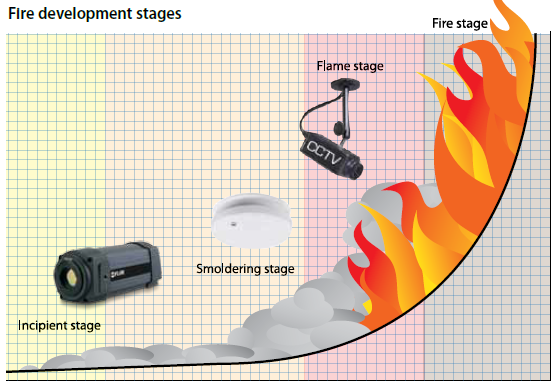
Depending on the previously set temperature alarm a thermal imaging camera will detect fire in either the incipient or the smoldering stage. A smoke detector relies on smoke production to detect the developing fire, so it will only detect the fire at the end of the smoldering stage or at the beginning of the flame stage. CCTV cameras rely on color contrast, so it will only detect the fire in the flame or fire stage, depending on lighting conditions.
Thermal imaging cameras require no maintenance nor any expensive and power consuming lighting to be effective. Thermal imaging cameras also generate fewer unwanted alarms, which are a common problem with CCTV cameras and smoke detectors. And as an additional advantage thermal imaging cameras from FLIR Systems can also be used for security, detecting intruders in total darkness if necessary.
Thermal imaging cameras might be slightly more expensive than CCTV cameras and smoke detectors at the initial purchase, but as they require no light whatsoever to function the maintenance costs and energy bills are kept low. This solution is also the only system that actually prevents the fire, keeping your assets safe and protecting you from costly stock loss, making it the best warehouse asset protection solution on the market today.
